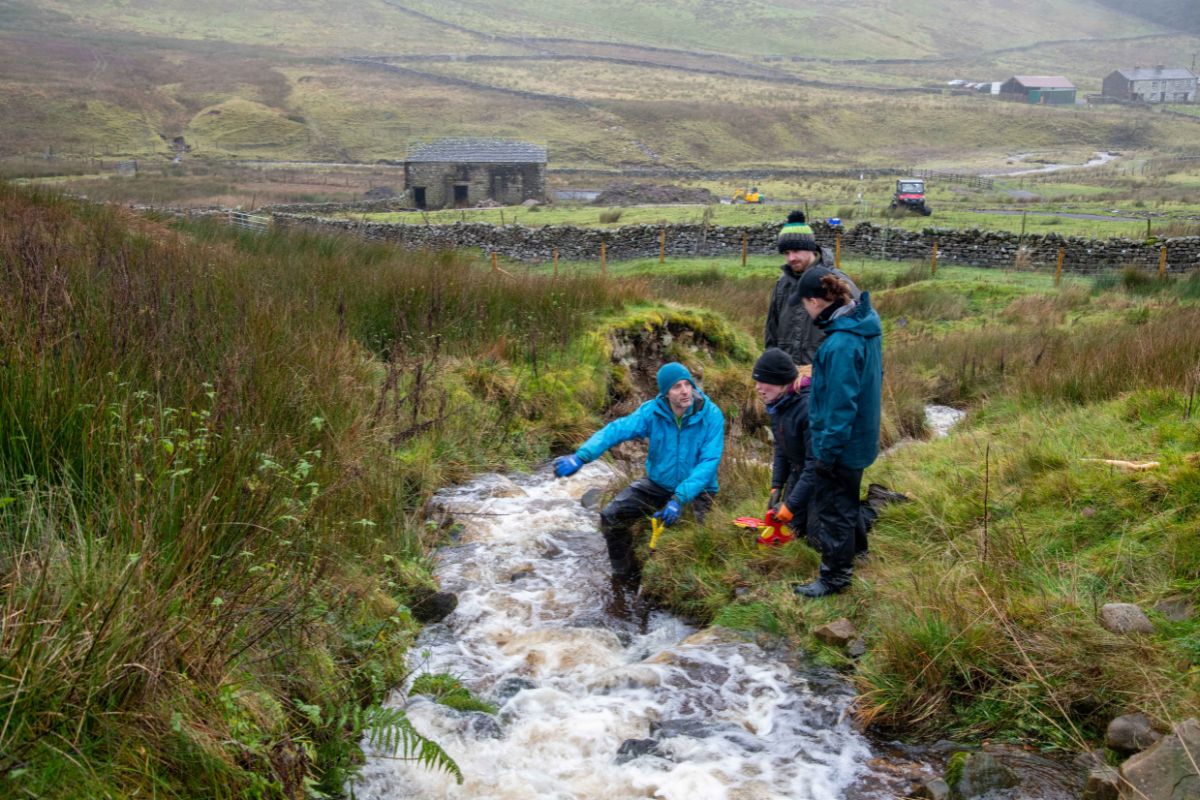New scientific research in English uplands to tackle the impacts of extreme weather
One of the biggest pieces of scientific research ever in English uplands will tackle the impacts of extreme weather.
New research will for the first time monitor how the creation of England’s biggest new native woodland could help stave off the worst effects of climate change, such as flooding.
Earlier this year, the Woodland Trust started work at Snaizeholme near Hawes, not only in creating one of the largest contiguous new native woodlands in England, but signalling the start of complex, but vital scientific research.
Over the course of the next 20 years or more, a team of world leading scientists from the University of York and University of Leeds will brave the site’s harsh weather conditions – which includes 200cm of rainfall a year making it the wettest place in Yorkshire - to collect detailed data. This will measure rainfall, soil properties and streamflow and track changes over time. This will help them, among many other things, to understand how the flood mitigation benefits of new woodlands develop as the trees grow.
Already on site, scientists are using specialist equipment such as soil moisture and temperature sensors, weather stations and state of the art “lightning detectors” to measure extreme weather events.
The results of this research have the potential to directly help adapt to the impacts of climate change by increasing understanding of how trees can reduce flooding risk, capture and store carbon, and provide vital habitat for nature recovery across UK uplands.
Dr. John Crawford, conservation evidence officer for the Woodland Trust, said:
“We know mature woodlands deliver a range of important benefits: they provide a home for nature, lock away carbon to fight climate change, and slow the flow of water helping to reduce downstream flooding. Less is known about new woodlands. Working together with world-leading researchers will allow us to take detailed measurements of how biodiversity and ecosystem functions change as the trees grow and the woodlands mature. The research has the power to be a game changer when it comes to how such a new site can combat the extreme effects of climate change.”
The Woodland Trust is planning to plant almost 291 hectares (719 acres) with native tree saplings. The careful approach to planting will see different densities of trees planted across the site to create groves, glades and open woodlands that gently transition into and connect with the other habitats, all delivered without the use plastic tree guards or herbicides.
It’s a unique and complex piece of conservation work due to the range of habitats and species, the topography and elevation – not to mention the estimated 2m of rainfall per year. Tree planting will exist alongside huge restoration projects, including 113 hectares (279 acres) of blanket bog / deep peat, approximately 100 ha (247 acres) of limestone pavement and over 77.4 hectares (191 acres) of open valley bottom following Snaizeholme Beck.
Phase one of woodland creation at Snaizeholme has been funded by the White Rose Forest through its Trees for Climate funding programme. Trees for Climate, part of Defra’s Nature for Climate fund, provides grants for woodland creation within all Community Forest areas in England. Researchers at the University of Leeds are supported by the Peter Sowerby Foundation. The project at Snaizeholme is supported by Woodland Trust’s partners Aviva, B&Q, Screwfix, Bettys & Taylors of Harrogate.



